Today I'd like to invite you to visit the other part of the exhibitions I visited at the Fagaras citadel.
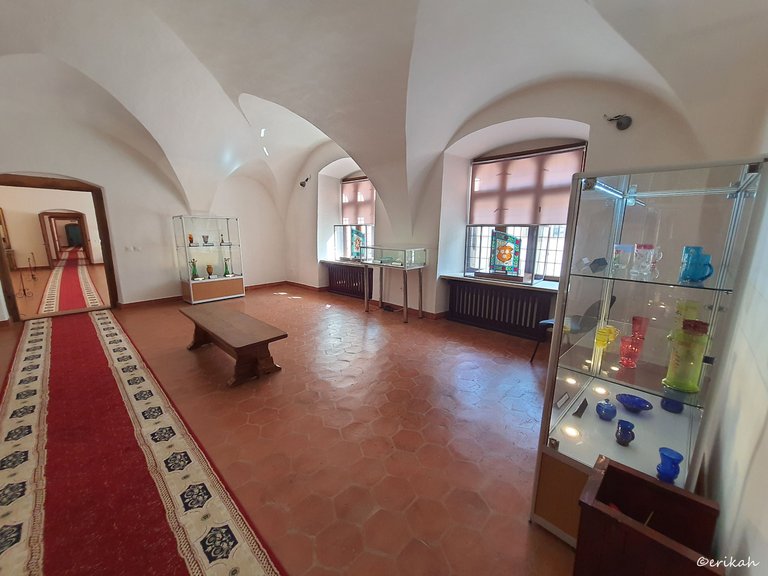
Unlike the fold costume exhibition, which was temporary, this exhibition was permanent, so if you happen to be in the neighborhood and visit the citadel, you can see some of these beauties with your own eyes.
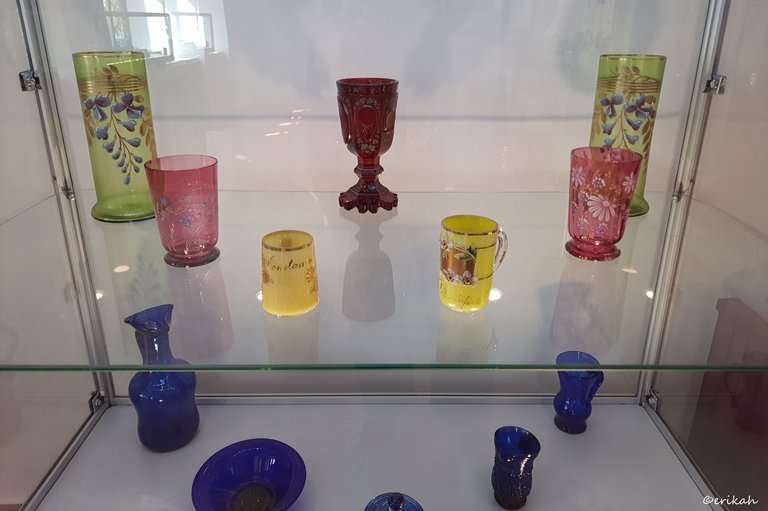
Painted glassware from the 19th century, from Bixad, which is a small commune situated in Satu Mare County, Romania.
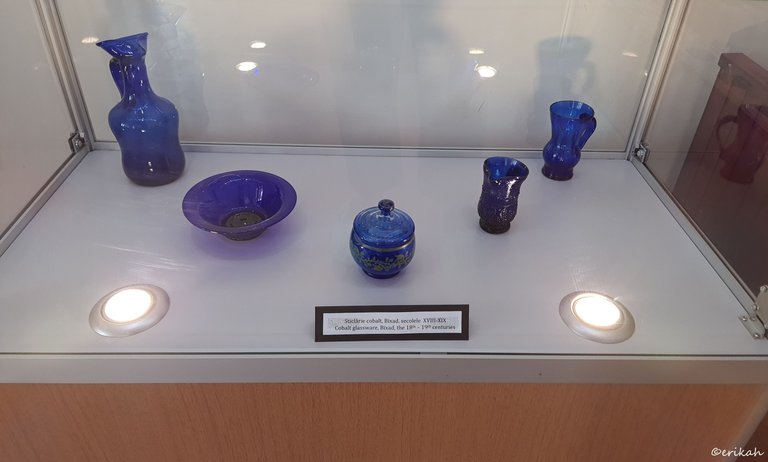
Cobalt glassware from the same place, from the 18th - 19th century.
The cobalt glassware looks pretty massive, but looking at the painted glassware on the previous photo, I can imagine the care these items needed to be handled. Most likely these were not for everyday use, or if they were, then only by the nobles. The precision of the design on these glasses is amazing. These are real artworks.
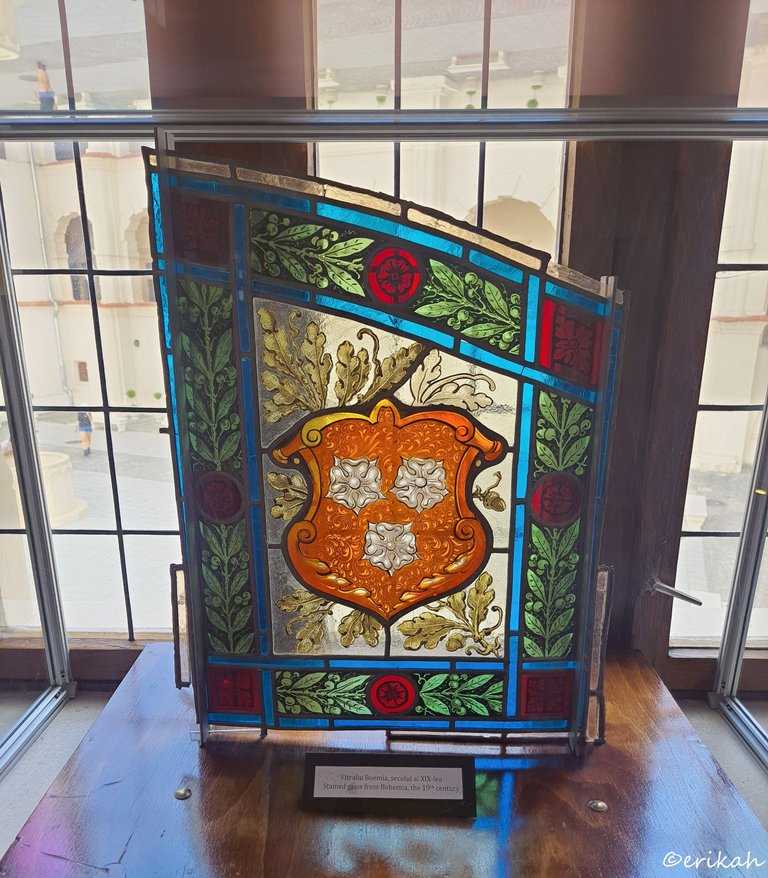
Stained glass from Bohemia, from the 19th century.
For those of you who are not familiar with Bohemia, it is the largest historical region of the Czech Republic. But what Bohemia is famous for worldwide is the Bohemian glass also known as Bohemia crystal. So for most of the Europeans Bohemia means crystal.
Bohemian glass is glass produced in the regions of Bohemia and Silesia, now parts of the Czech Republic. It has a centuries long history of being internationally recognised for its high quality, craftsmanship, beauty and often innovative designs. Hand-cut, engraved, blown and painted decorative glassware ranging from champagne flutes to enormous chandeliers, ornaments, figurines and other glass items are among the best known Czech exports and immensely popular as tourist souvenirs. The Czech Republic is home to numerous glass studios and schools attended by local and foreign students. source
It didn't say where that nice stained glass piece was from, but I suppose it was part of a window, or a door, that most likely got renovated.
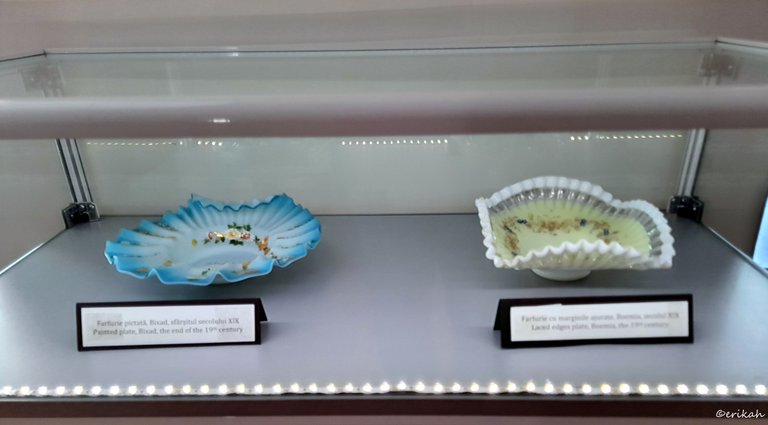
These two plates look like from China at first glance, but they are not. The blue on the left was made at Bixad at the end of the 19th century and the other is a Bohemian piece from the 19th century. I was wondering if these were ever in use, or were only serving as decorative items.
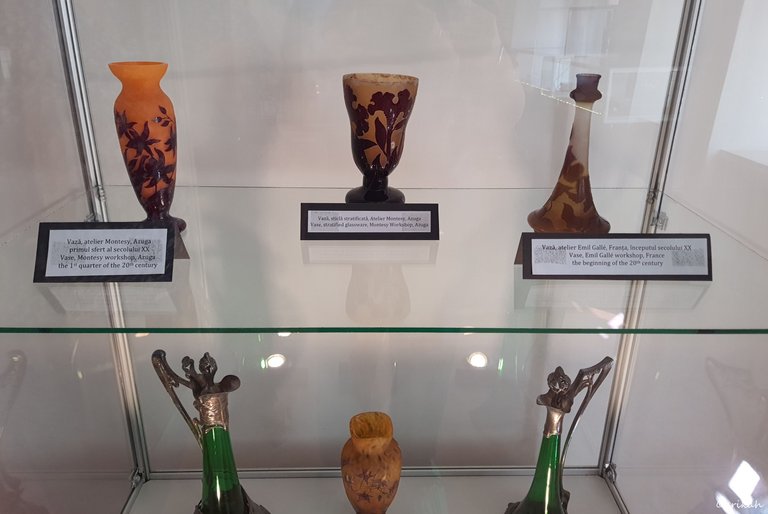
The first two vases were made by a monastery in Azuga (Romania) in the 20th century. I knew monks and nuns were making different items for personal use and for sale as well, but to see these vases at the citadel was a surprise. The vase on the right was from Emil Gallé's workshop, from France, all made in the 20th century.
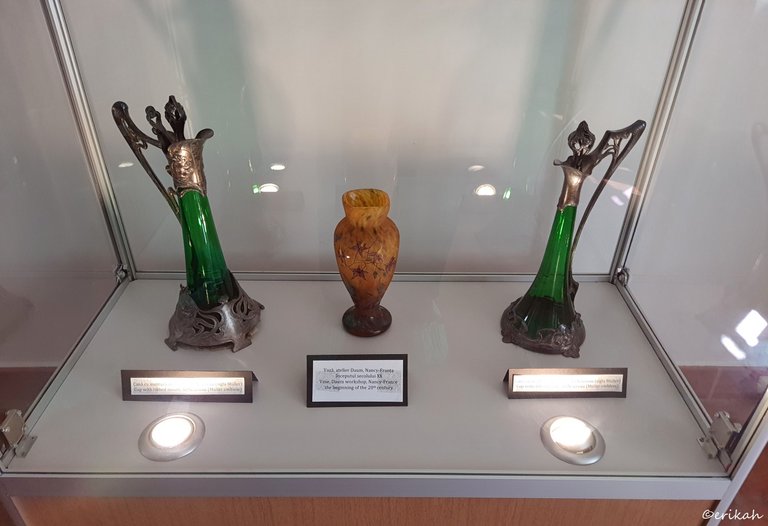
Look at those cups with ribbed mouth. As artworks or collectible items, these are looking good, but drinking from them must have been difficult, or I cant imagine doing it so comfortably. Anyway, I appreciate the design a lot.
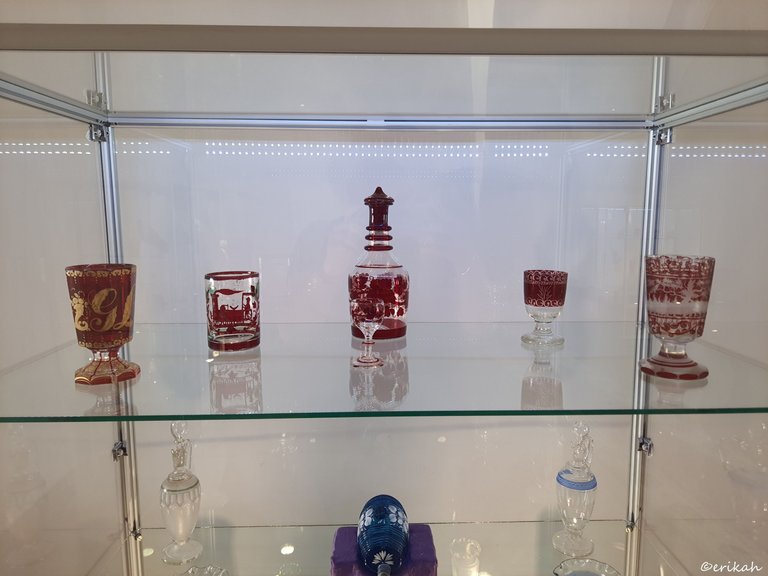
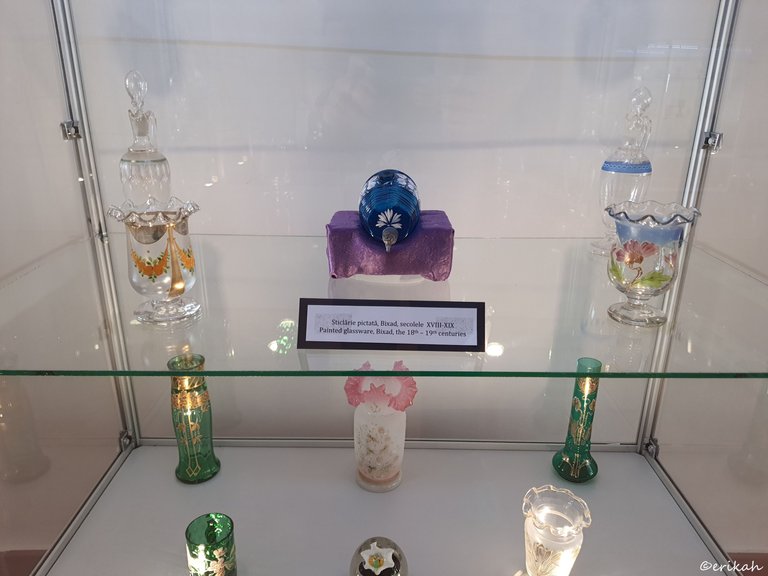
These glasses were also made at Bixad in the 18th - 19th century. At this point I was very surprised to see so many glasses made at Bixad. I knew about the place, but have never known there used to be such a workshop there, so there was a lot to learn at this exhibitions.
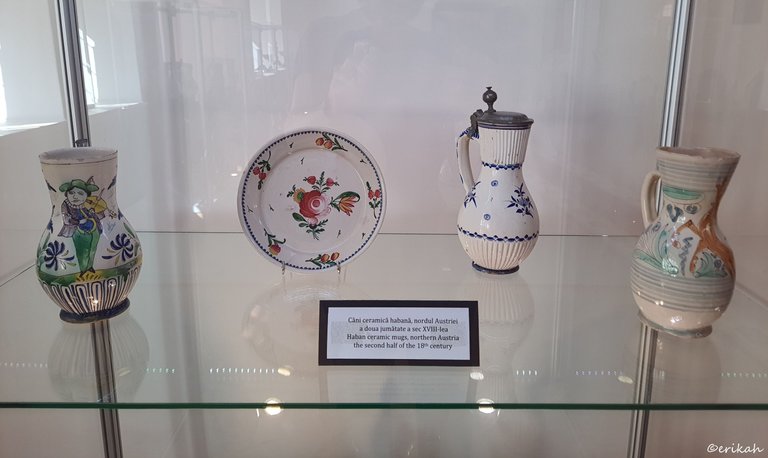
Ceramics can't be missing from any museum of this kind, so there were plenty here too. These are from the north part of Austria, from the 18th century. The vase on the left is pretty interesting.
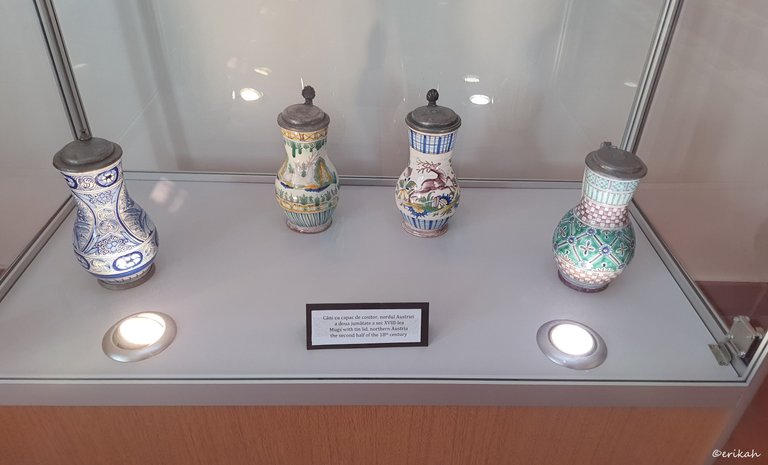
These mugs with lid were very popular back in those days. To be honest, I never understood why those mugs need a lid, o if you know, please reveal the secret to me too. I have one at home, mine is made of glass though and it's not an old one. There were also from the north part of Austria, from the 18th century.
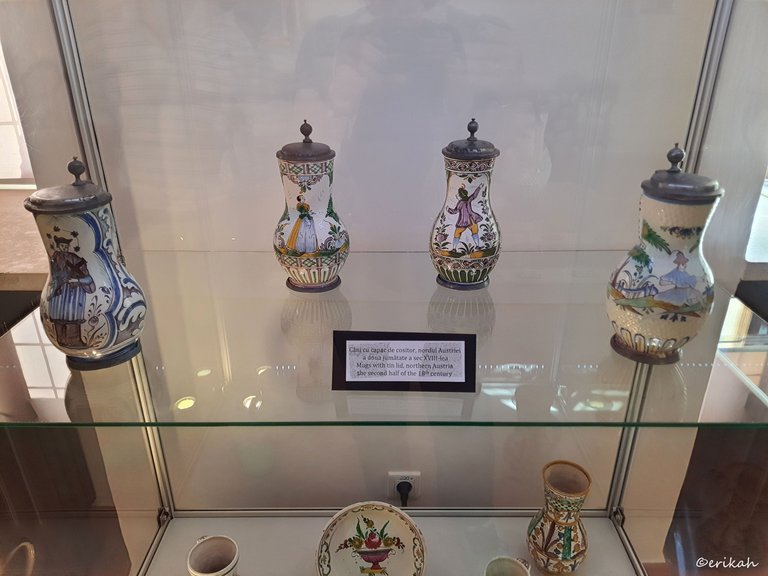
I can see these have almost the same design, maybe it was a series of mugs.
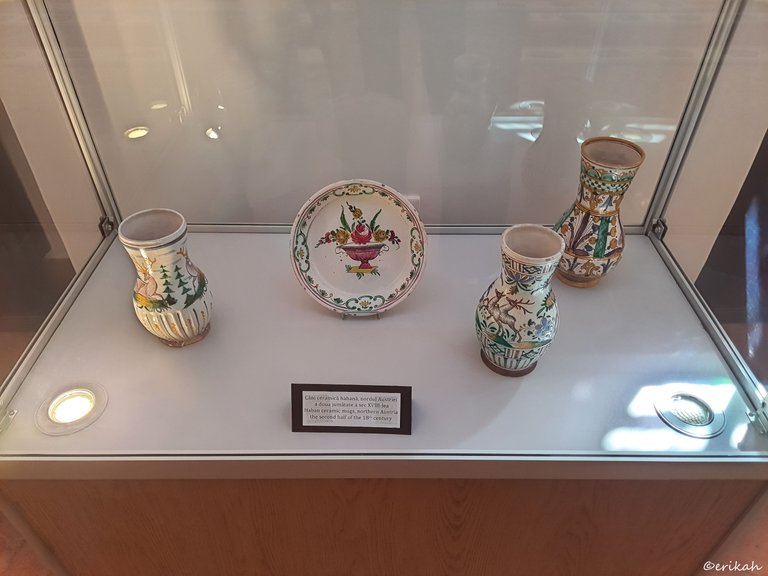
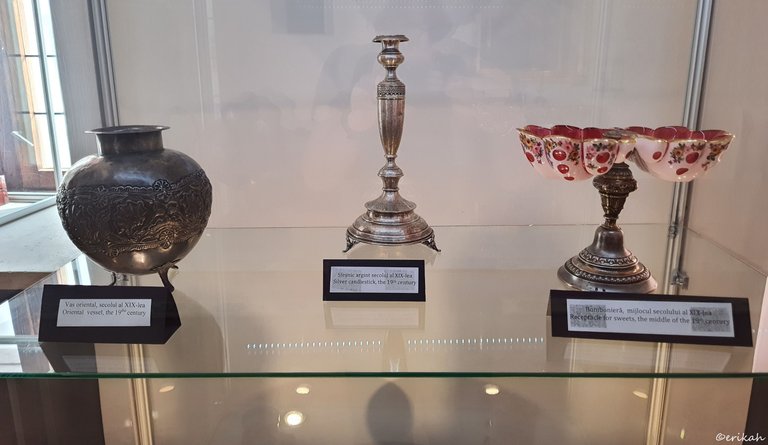
Look at that candy holder on the right! If that's not a masterpiece, then I don't know what is. It's from the 19th century, just like the other items on the photo above.
Looking at these glassware and ceramics, made m remember the porcelain collection I saw at the Schönbrunn Palace, in Vienna. Obviously what you see here is maybe 1% of what the Austrians have at he palace.
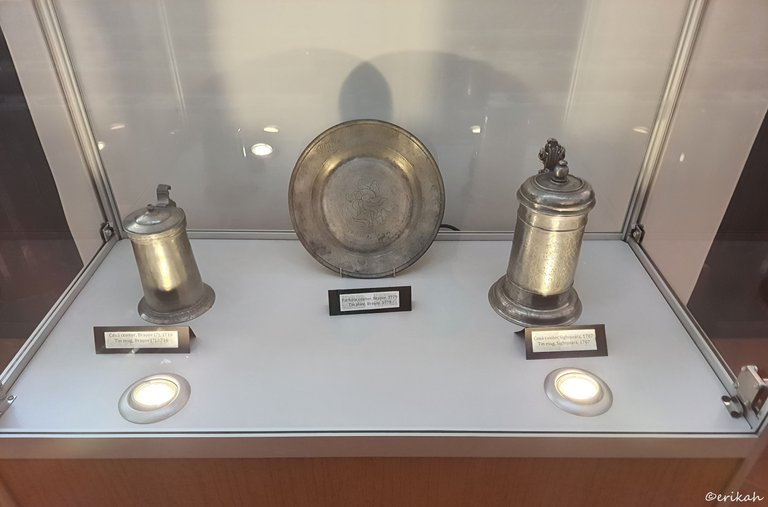
Thin mugs and plates, from 1716, 1779, 1707. Looking at them, I'm really glad I was born, when I was born and didn't have to use these. Just thinking of drinking from these cups, or cutting my stake on that plate gives me the chills.
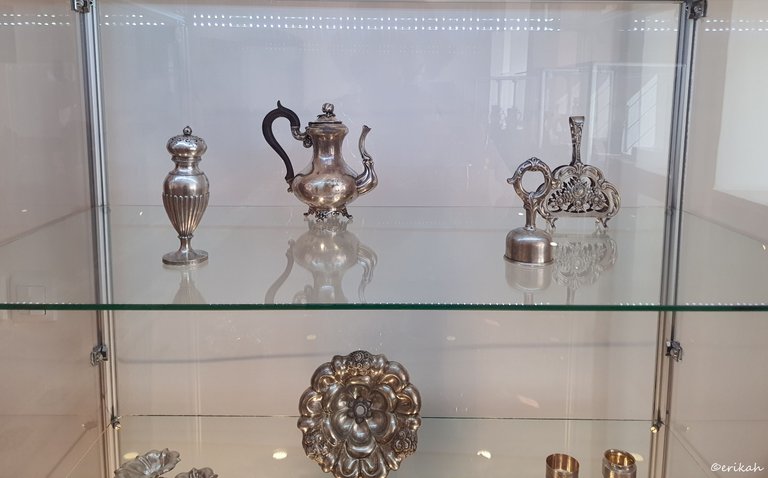
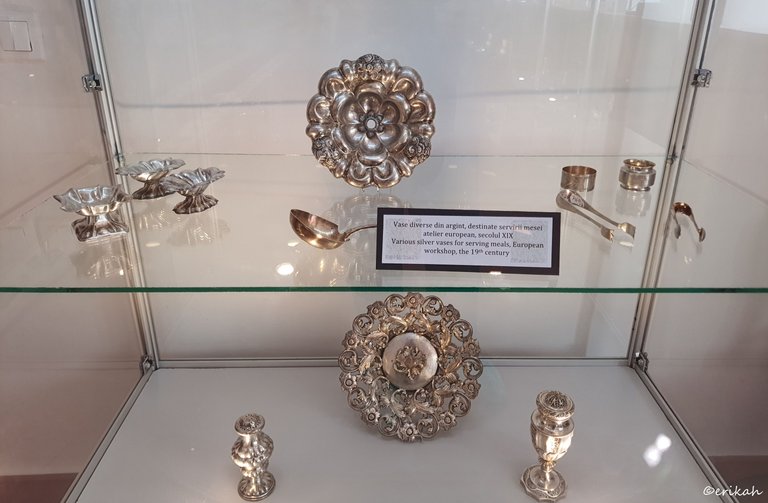
This is silver as thin was for the lower class, nobles used silver or gold plated items.
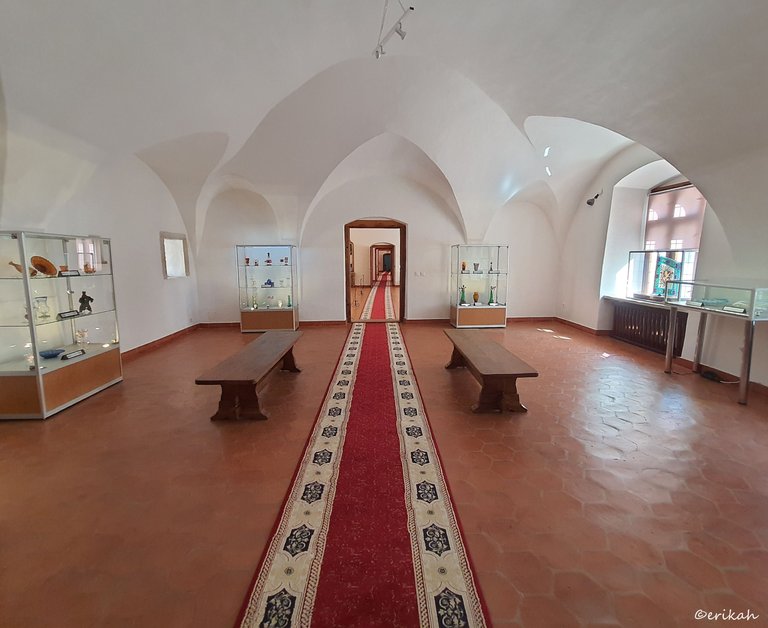
Last, but not least, a photo that was taken due to my obsession with narrowing spaces. These castles are all built the same way, the doors are in one line, so if all the doors are open, you can see straight in the last room and you can take a nice shot. However, I failed here. Looks like the way through these doors is curvy 😂 The truth is, when there's a crowd, you don't have much time to find the perfect spot as you're holding people up. Here there was no crowd, but there were people coming and going. So I need to pay more attention to precision next time.

If you're a newbie, you may want to check out these guides:
- Communities Explained - Newbie Guide
- Cross Posting And Reposting Explained, Using PeakD
- Hive Is Not For Me
- How To Pump Your Reputation Fast - Newbie Guide
- Tips And Tricks & Useful Hive Tools For Newbies
- More Useful Tools On Hive - Newbie Guide
- Community List And Why It Is Important To Post In The Right Community
- Witnesses And Proposals Explained - Newbie Guide
- To Stake, Or Not To Stake - Newbie Guide
- Tags And Tagging - Newbie Guide
- Newbie Expectations And Reality
- About Dust Vote And Hive Reward Pool, by libertycrypto27


